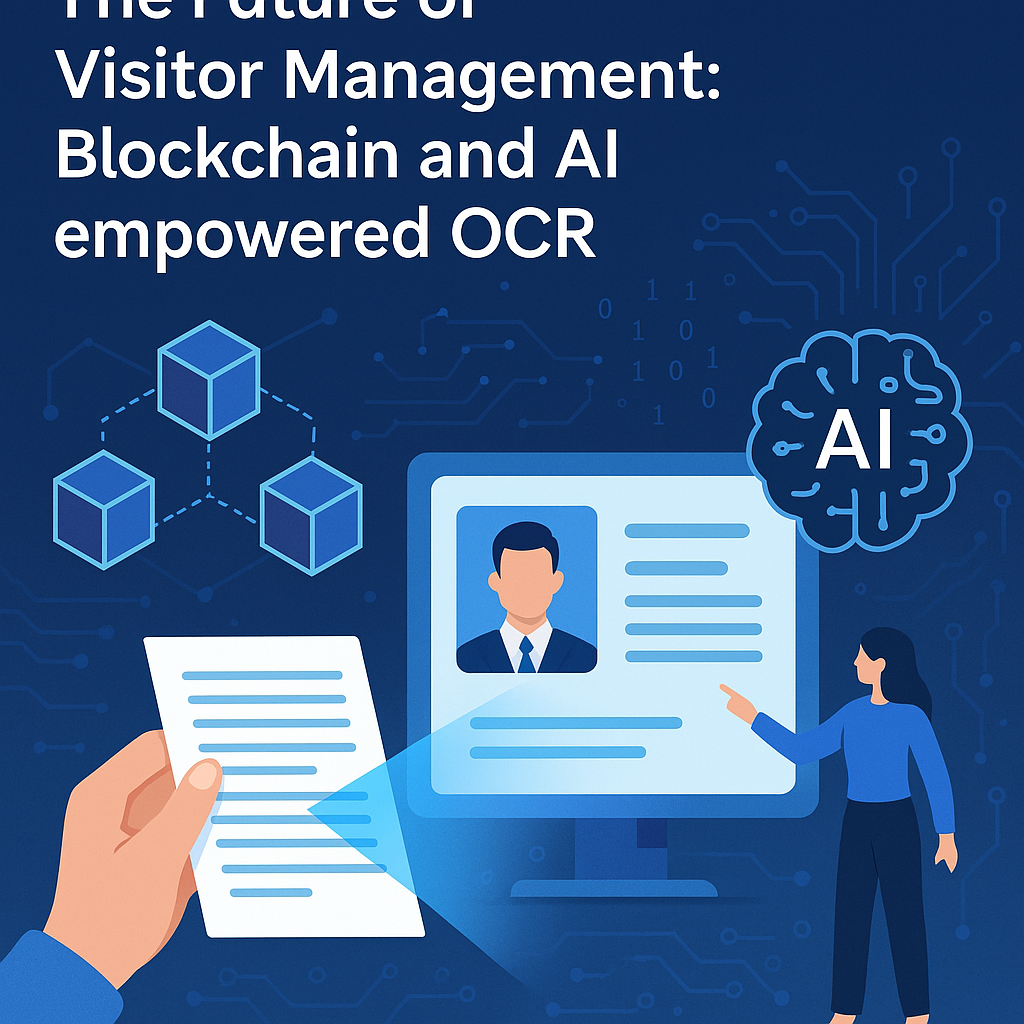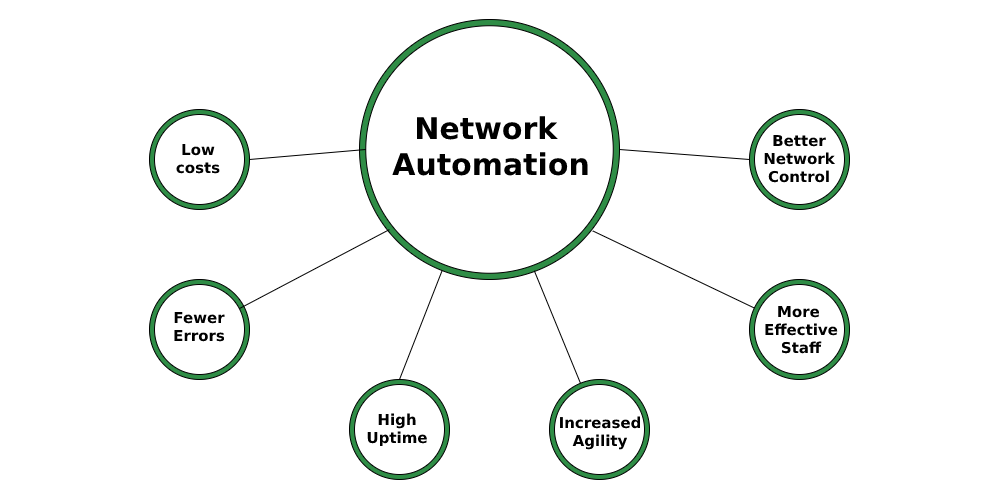
The Future of Visitor Management: Blockchain and AI empowered OCR
In this evolving technological landscape, visitor management is set to undergo a transformation. Discover how the convergence of blockchain technology and AI-enabled Optical Character Recognition (OCR) can reshape the future of security, efficiency, and user experience in visitor management systems, paving the way for a seamless integration of data and personnel management.
Dev Orbit
July 27, 2025
Introduction
Visitor management systems have become crucial in streamlining check-in processes at various institutions, such as offices, schools, and hospitals. Traditional systems often grapple with inefficiencies, such as data breaches and time-consuming manual processes, leading to frustrations among visitors and administrators alike. As organizations seek innovative solutions, the integration of advanced technologies like blockchain and AI-driven OCR emerges as a game-changer. This not only enhances security and efficiency but also offers unprecedented user experience. In this article, we will dive deep into how these transformative technologies will shape the future of visitor management.
Understanding Visitor Management Systems
Before delving into the solutions brought forth by blockchain and AI, it is essential to grasp the current challenges faced by conventional visitor management systems.
Manual Data Entry: Many organizations still rely on paper logs and manual entry, leading to human errors and misplaced data.
Data Security: With sensitive information often collected, data breaches pose a significant threat.
Poor User Experience: Long waiting times and cumbersome check-in processes can lead to a frustrating experience for visitors.
Integration Issues: Many existing systems do not integrate well with other security and administrative systems, leading to data silos.
These pain points highlight the need for innovative solutions that can enhance visitor experiences while providing robust data security and management capabilities.
Blockchain: The Key to Unbreakable Security
Blockchain technology has gained immense traction due to its decentralized and secure nature. Here’s how it can revolutionize visitor management:
Decentralization: Traditional databases are often centralized, making them susceptible to hacks and data loss. Blockchain’s decentralized structure ensures that no single point of failure exists. Data regarding visitors can be securely recorded across a distributed network, making it nearly impossible for unauthorized parties to alter it.
Immutability: Once data gets recorded on a blockchain, it cannot be altered or deleted. This ensures that every visitor’s information is accurately maintained over time, enhancing trust and accountability.
Smart Contracts: These are self-executing contracts with the terms directly written into code. For visitor management, smart contracts can automate processes such as access permissions and logging of visitor activities without needing intermediaries, streamlining operations.
Enhanced Privacy: Blockchain allows individuals to own and control their data. In visitor management, this means visitors can choose what information they wish to share, thereby improving privacy and compliance with regulations like GDPR.
By leveraging blockchain, organizations can create a secure and trustworthy environment that assures visitors that their data is handled with the utmost care.
AI-Driven Optical Character Recognition (OCR)
The combination of AI and OCR technology can further enhance the efficiency of visitor management systems. Here’s how:
Automated Data Capture: AI-powered OCR can automatically extract and digitize information from documents like IDs or tickets, significantly reducing manual data entry. This efficiency helps in faster check-in processes, minimizing waiting times for visitors.
Data Accuracy: Advanced OCR algorithms reduce the likelihood of errors in data entry. Unlike manual systems prone to human errors, AI can recognize and verify characters accurately, enhancing data quality.
Real-Time Analytics: AI can analyze visitor patterns in real-time, enabling better resource allocation and improved visitor experiences. Organizations can consequently identify peak visiting times and make necessary adjustments to staffing.
Seamless Integration: AI-enabled OCR can integrate easily with existing databases and software, ensuring a smooth transition and more unified data management.
The synergy between AI and OCR means organizations can ensure swift and reliable visitor check-ins, enhancing overall operational efficiency.
Real-World Applications: Case Studies
Examining real-world applications of blockchain and AI-driven OCR gives a clearer picture of their potential:
Example 1: Corporate Office
A multinational corporation implemented a visitor management system using blockchain to record visitor data securely. By utilizing AI-driven OCR, they automated the check-in process, allowing guests to scan their IDs using kiosks. Over time, their average check-in time decreased from 10 to 2 minutes, enhancing visitor satisfaction and operational efficiency.
Example 2: Educational Institutions
A well-known university adopted an AI OIR-enabled visitor management system integrated with blockchain. The system allowed parents and guardians to pre-register, offering them control over what information they provided. The immutable records on the blockchain provided assurance regarding security. Additionally, the institution reduced paperwork significantly, transitioning to a fully digital solution, which streamlined operations and improved visitor experience.
Example 3: Healthcare Facilities
A hospital deployed a visitor management system incorporating blockchain to manage sensitive patient visitor data. The integration of AI OCR enabled quick data extraction from visitor IDs without delay at check-in, leading to enhanced security and privacy compliance.
The Challenges of Implementation
While the benefits of adopting blockchain and AI-driven OCR are significant, organizations must also navigate several challenges:
Initial Costs: Implementing advanced technologies often involves significant initial investments, which can deter organizations, especially smaller ones.
Training and Adaptation: Employees may need training to adapt to new systems and processes, requiring time and resources that some organizations may not be willing to allocate.
Regulatory Compliance: Although blockchain offers increased privacy, organizations must still comply with various regulatory requirements, which may vary by region or industry.
Technical Expertise: Carrying out seamless implementations necessitates a certain level of technical expertise that may not be readily available within all organizations.
To overcome these challenges, organizations should conduct thorough research and potentially engage with consultants or tech partners experienced in blockchain and AI technology for successful implementation.
Bonus/Advanced Tips
For organizations considering an upgrade to their visitor management systems, here are some advanced tips:
Start Small: Begin by integrating AI OCR for a specific use case within your organization. This approach allows for gradual adaptation and minimizes disruption.
Invest in Training: The effectiveness of new technologies relies heavily on the users. Ensure staff members undergo comprehensive training to maximize the system's value.
Collaborate with Experts: If you lack the in-house expertise, consider partnering with specialized firms that have a proven track record in blockchain and AI technologies.
Focus on User Experience: Whatever system you implement, prioritize user experience by ensuring the technology is user-friendly and minimizes friction in the check-in process.
Monitor and Optimize: After implementation, consistently monitor system performance and user feedback to identify areas for improvement.
By following these tips, an organization can enhance the chances of successful implementation and reap the benefits of modernized visitor management.
Conclusion
The convergence of blockchain and AI-powered OCR represents a pivotal shift in visitor management systems, addressing long-standing issues of inefficiency, data security, and user experience. By understanding these technologies and their applications, organizations can enhance their visitor management and offer a seamless, secure experience for all visitors. Are you ready to leverage these advanced solutions in your organization? Share your thoughts in the comments below and let us know how you plan to embrace this transformative innovation in visitor management.

Enjoyed this article?
Subscribe to our newsletter and never miss out on new articles and updates.
More from Dev Orbit

GitHub Copilot vs Tabnine (2025): Which AI Assistant is Best?
AI coding assistants are no longer futuristic experiments—they’re becoming essential tools in the modern developer’s workflow. In this review, we’ll compare GitHub Copilot and Tabnine head-to-head in 2025, exploring how each performs in real-world backend coding tasks. From productivity gains to code quality, we’ll answer the burning question: Which AI assistant should you trust with your code?

The Network Evolution: Traditional vs. Automated Infrastructure
Discover the revolution from traditional to automated network infrastructures, learn the benefits, challenges and advanced strategies for seamless transition.

AI Is Reshaping Jobs — and That Could Hit You Hard
As artificial intelligence continues to evolve, its impact on the job market is growing more profound each day. In this article, we will explore how AI technologies like GPT-5 are transforming various industries, the potential risks for workers, and actionable steps to navigate this changing landscape. From automation to the creation of new job roles, we will offer insights that every professional should be aware of to remain competitive in the era of AI.

Event-Driven Architecture in Node.js
Event Driven Architecture (EDA) has emerged as a powerful paradigm for building scalable, responsive, and loosely coupled systems. In Node.js, EDA plays a pivotal role, leveraging its asynchronous nature and event-driven capabilities to create efficient and robust applications. Let’s delve into the intricacies of Event-Driven Architecture in Node.js exploring its core concepts, benefits, and practical examples.

AI: A Double-Edged Sword for HumanityAI: A Double-Edged Sword for Humanity
As we navigate the uncharted waters of artificial intelligence, we face a remarkable revolution that holds the potential to dramatically reshape human existence. This article delves into how AI can serve both as an unparalleled tool for advancement and a potential source of significant challenges. We will explore the implications of AI, particularly the upcoming advancements like GPT-5, offering valuable insights into harnessing its power responsibly.

Unlocking WASI: The Future of Serverless with WebAssembly
Discover how WASI is transforming serverless computing with secure, portable WebAssembly runtimes for the cloud era.
Have a story to tell?
Join our community of writers and share your insights with the world.
Start Writing